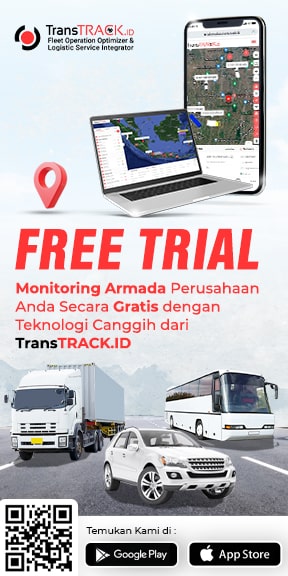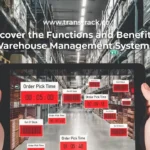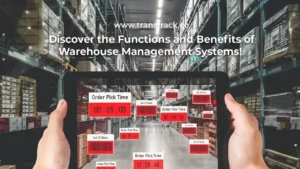Learn What is Packing List, Its Functions and Contents in the World of Import and Export
Posted on December 29, 2023 by Nur Wachda Mihmidati

In the world of export and import there are several terms that may not be known by many people, one of which is the packing list. Packing lists is an important document that is often used in the export and import business. Understanding what a packing list is can make it easier for you to run an export import business.
Let’s improve your understanding of the term packing list in the article TransTRACK below. We have comprehensively summarized all the important information related to packing lists. So, let’s get started!
What is Packing List?
A packing list is a document that contains detailed information about the contents of a package or shipment in export and import activities. This document includes specific details about the goods and gives the relevant parties an idea of what should be in each package.
Packing lists are used by vendors, shippers, carriers, and receivers for various purposes, such as verifying, disclosing, and identifying goods. This document is useful during the process of checking the contents of the package by customs officers and importers, so as to ensure that the contents of the package match the shipping data.
Function of Packing List
The importance of the packing list should not be overlooked. This document has several key functions that support the smooth import-export process. namely:
Accurate Identification of Goods
The main function of a packing list is to present very detailed information about the items being shipped. Starting from the type of item, quantity, to net weight, everything must be recorded accurately. This helps the parties involved, both from the sender and receiver side, to identify and verify each item easily.
Clear Packaging Information
Packing lists provide a comprehensive overview of how the goods are packed. It includes the type of packaging used and the number of packaging units. This information is key, especially for logistics parties who will handle the goods during shipment. Proper packaging can prevent damage during transit and ensure the goods remain in good condition.
Customs and Security Checks
In the import-export process, the customs authorities play a crucial role. The packing list provides detailed information to customs authorities about the type of goods being shipped and allows them to assess and check compliance with customs regulations. In addition, this document can facilitate security checks of goods at the port or airport.
Simplify the Tracking and Monitoring Process
Packing lists help in monitoring the journey of goods from shipper to receiver. By including serial numbers or other identifiers, this document facilitates real-time monitoring. This makes it easy to identify potential problems or delays and provide a quick response to minimize their impact.
What Are the Contents of the Packing List Document
Packing list contains detailed information about the goods being shipped, including the quantity, weight, dimensions, and description of the goods. Here are the contents of a typical packing list document:
Sender and Receiver Information
- Name and full address of the sender (exporter) and receiver (importer).
- Contact number and other relevant information.
Item Description
- The name of the item being shipped.
- Reference number or item code.
- Number of packages or cartons shipped.
- Net weight and gross weight of each package.
- Packaging dimensions.
Packaging Details
- Type of packaging (e.g., wooden box, pallet, or drum).
- Packaging number.
- Packaging identifier (e.g., seal number or label).
Shipping Information
- Shipping method (air, sea, land).
- Container number container (if shipped by container).
- Flight or ship number (if shipped by air or sea).
Additional Information
- Special packaging or handling instructions.
- Receipt or signature of the recipient.
Impact if the Data on the Packing List is Incorrect in the Import-Export Process
Errors or data mismatches on the packing list can have a serious impact on the entire import-export process. Here are some of the possible impacts that occur if the data in the packing list does not match:
Delivery Delays and Additional Costs
If the data on the packing list is inaccurate, this may cause delays in delivery. For example, if the quantity or type of goods does not match what is listed in the document, the customs or transportation authority may hold the shipment for further inspection. Not only does this cause time delays, but it can also incur unexpected additional costs.
Logistics and Inventory Management Complications
Incorrect data on packing lists can cause complications in logistics and inventory management. Logistics parties can struggle to plan efficient delivery routes or organize stock correctly if information on the number and type of goods is inaccurate. This can result in higher operational costs and inefficiencies in the supply chain.
Customer Dissatisfaction and Reputational Loss
Discrepancies between the information on the packing list and the goods received by the customer can result in customer dissatisfaction. Goods that do not meet expectations or promises can damage a company’s reputation and affect long-term business relationships. These mistakes can lead to financial losses and difficulty in rebuilding customer trust.
Understanding what a packing list is, its functions, and the contents of the document can help streamline the entire international trade process. For companies involved in import export, ensuring the accuracy and completeness of the packing list is an important step to ensure the smooth flow of goods from one country to another.
You can use Transportation Management System (TMS) from TransTRACK to optimize the logistics management process. This system can provide significant benefits in optimizing the delivery of goods and ensuring smooth distribution, including optimizing packing list documents.
Integrating TMS with logistics processes will allow companies to automatically process information from packing lists and optimize shipping routes, reduce the risk of human error, and improve operational efficiency. Find out more information about how TMS can optimize your import-export business processes by visiting the website TransTRACK. Thank you for reading this article.
Topic :
 Bahasa Indonesia
Bahasa Indonesia








